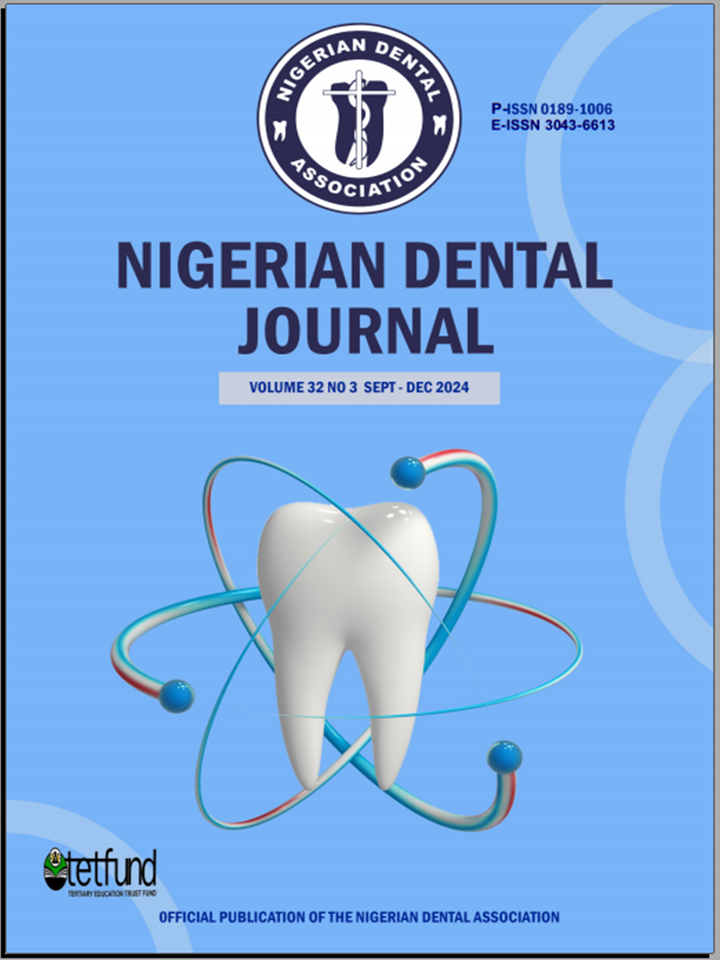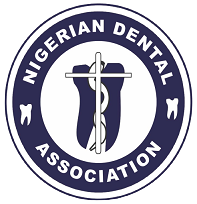Parental Age and Severity of Non-Syndromic Orofacial Clefts: Relationship with De Novo Mutations
DOI:
https://doi.org/10.61172/k2m6rt36Keywords:
paternal age, Age, cleft lip and palate, severityAbstract
Background: This study investigates the relationship between paternal and maternal age, and the severity of orofacial clefts and the presence of de novo mutations in children.
Methods: This was a retrospective study of individuals who were diagnosed with non-syndromic cleft lip and/or palate (CL/P) and their unaffected parents, from 2012 to 2019. We obtained data from the AfriCRAN project database for Nigerians with non-syndromic orofacial clefts. These individuals were recruited at the Oral and Maxillofacial Surgery Clinic, Lagos University Teaching Hospital, Lagos.
Results: There was no statistically significant association between type of CL ± P and parental age in young fathers (p = 0.93). When older fathers were considered, the percentage of complete (more severe) CL ± P cases increased, especially when they were married to older mothers, and this was statistically significant (p = 0.036). In older fathers, the risk of CL ± P in their offspring was increased (OR: 2.66, CI: 1.04-6.80), and there was also an increased risk of developing right-sided CL ± P (OR: 1.61, CI: 1.0-2.59). There was a reduced risk of isolated clefts of the soft palate in younger fathers (OR: 0.36, CI: 0.07–1.71), but the risk increased when considering complete types (more severe) of isolated clefts of the hard and soft palates (OR: 1.63, CI: 0.7–1.7). There was an increase in de novo mutation in children as the difference between paternal and maternal age increased.
Conclusion: The study showed that a higher risk of CL ± P and de novo mutations in children is associated with increased parental age.
Downloads
References
1. Butali A, Adeyemo WL, Mossey PA, Olasoji HO, Onah II, Adebola A, et al. Prevalence of orofacial clefts in Nigeria. Cleft Palate-Craniofacial J. 2014;
2. Stone C. Cleft Lip and Palate: Etiology, Epidemiology, Preventive, and Intervention Strategies. Anat Physiol. 2013;04(03):2–6.
3. Wong FK, Hägg U. An update on the etiology of orofacial clefts. Hong Kong Med J. 2004;10(5):331–6.
4. Bille C, Skytthe A, Vach W, Knudsen LB, Andersen AMN, Murray JC, et al. Parent’s age and the risk of oral clefts. Epidemiology. 2005;16(3):311–6.
5. Yang Q, Wen SW, Leader A, Chen XK, Lipson J, and Walker M. Paternal age and birth defects: How strong is the association? Hum Reprod. 2007;22(3):696–701.
6. de Carvalho PHP, Machado RA, Reis SR de A, Martelli DRB, Dias VO, Martelli-Júnior H. Parental age is related to the occurrence of cleft lip and palate in Brazilian populations. Brazilian J Oral Sci. 2016;15(2):167–70.
7. Leth Jensen B, Kreiborg S, Dahl E, and Fogh-Andersen P. Cleft lip and palate in Denmark, 1976–1981: Epidemiology, variability, and early somatic development. Cleft Palate J. 1988;25(3):258–69.
8. Sartorelli EMP, Mazzucatto LF, and De Pina-Neto JM. Effect of paternal age on human sperm chromosomes. Fertil Steril. 2001;76(6):1119–23.
9. Nybo Andersen AM, Urhoj SK. Is advanced paternal age a health risk for the offspring? Fertil Steril. 2017;107(2):312–8.
10. Wiener-Megnazi Z, Auslender R, Dirnfeld M. Advanced paternal age and reproductive outcome. Asian J Androl. 2012;14(1):69–76.
11. Bray I, Gunnell D, Smith GD. Advanced paternal age: How old is too old? J Epidemiol Community Health. 2006;60(10):851–3.
12. Luo YL, Cheng YL, Gao XH, Tan SQ, Li JM, Wang W, et al. Maternal age, parity, and isolated birth defects: A population-based case-control study in Shenzhen, China. PLoS One. 2013;8(11):4–9.
13. Kim YJ, Lee JE, Kim SH, Shim SS, and Cha DH. Maternal age-specific rates of fetal chromosomal abnormalities in Korean pregnant women of advanced maternal age. Obstet Gynecol Sci. 2013;56(3):160.
14. Martelli DRB, da Cruz KW, de Barros LM, Silveira MF, Swerts MSO, and Junior HM. Maternal and paternal age, birth order, and interpregnancy interval evaluation for cleft lip and palate. Braz J Otorhinolaryngol. 2010;76(1):107–12.
15. Harville EW, Wilcox AJ, Lie RT, Vindenes H, Åbyholm F. Cleft lip and palate versus cleft lip only: Are they distinct defects? Am J Epidemiol. 2005;162(5):448–53.
16. Hermann N. V., Darvann TA, Munch A, Kreiborg S. Parental age in relation to the severity of cleft lip and/or palate. Orthod Craniofacial Res. 2018;21(4):236–41.
17. Zhu JL, Madsen KM, Vestergaard M, Olesen A V., Basso O, Olsen J. Paternal age and congenital malformations. Hum Reprod. 2005;20(11):3173–7.
18. Thompson JA. Disentangling the roles of maternal and paternal age on the birth prevalence of Down syndrome and other chromosomal disorders using a Bayesian modeling approach. BMC Med Res Methodol. 2019;19(1):1–8.
19. James Olutayo, Erinoso Olufemi, Ogunlewe Ajoke, Adeyemo Wasiu L, Ladeinde Akinola L, and Ogunlewe Mobolanle. Parental Age and the Risk of Cleft Lip and Palate in a Nigerian Population: A Case-Control Study. Annals of Maxillofacial Surgery 10(2):p 429–433, July–Dec 2020.
Downloads
Published
Issue
Section
License
Copyright (c) 2024 Olawale ADAMSON, Abimbola OLADUGBA, Azeez ALADE, Waheed AWOTOYE, Tamara BUSCH, Mary LI, Azeez FASHINA, Joy OLOTU, Veronica SULE, Olutayo JAMES, Mobolanle OGUNLEWE, Wasiu ADEYEMO, Azeez BUTALI

This work is licensed under a Creative Commons Attribution 4.0 International License.
Open Access Statement
- We became fully Open Access since January 2023.
- Our new and archived materials are available free of charge on open basis and under a Creative Commons license as stated below.
Copyright statement
Copyright © 1999 The authors. This work, Nigerian Dental Journal by Nigerian Dental Association is licensed under Creative Commons Attribution 4.0 International License.


